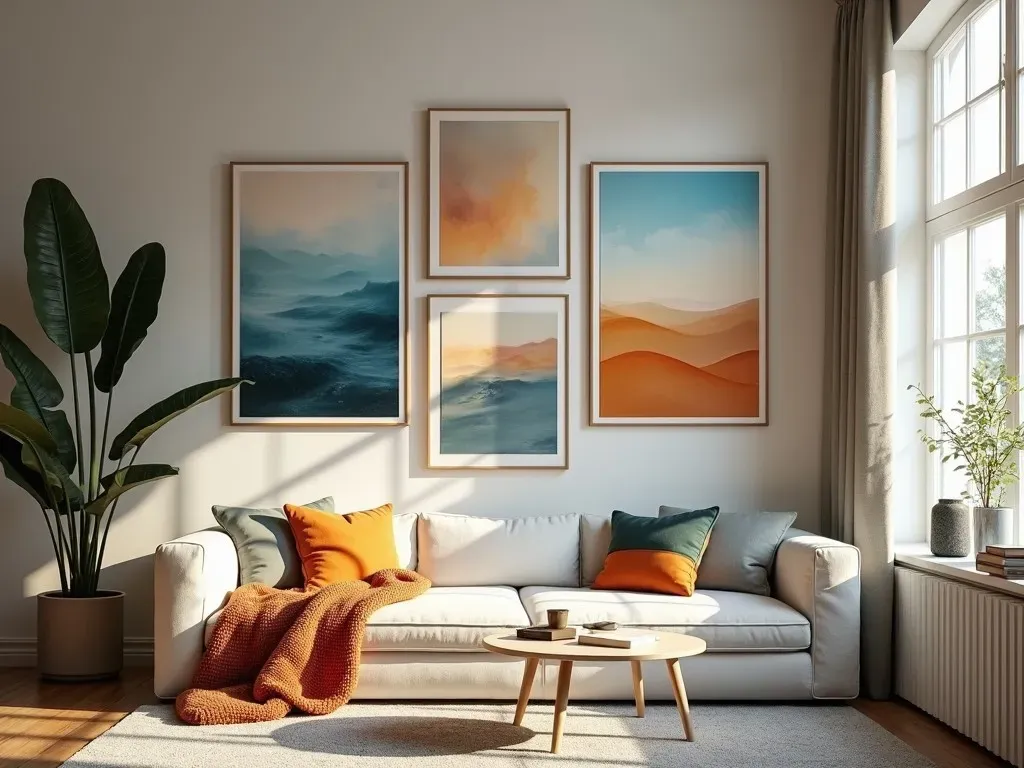Painting posters are more than mere decorations; they are a doorway into the world of art that can transform any space into a vibrant gallery. With a multitude of choices available, from classic masterpieces to modern interpretations, these posters serve as an affordable and accessible means to bring the beauty of famous artworks into our daily lives.
Art in posters has been increasingly popular, offering an opportunity for everyone to showcase their style and appreciation for creativity. These vivid reproductions of renowned art pieces make it easy to create an inspiring environment in your home or office. Today, we’ll delve deeper into the world of painting posters, highlighting their benefits, ways to choose the right ones for your space, and where you can find the best selections.
Why Choose Painting Posters?
-
Affordable Art
One of the greatest advantages of painting posters is their affordability. Unlike original artworks or expensive prints, posters allow you to enjoy famous art without the hefty price tag. -
Variety
From the classic works of Da Vinci and Monet to modern artistic expressions by Banksy and Warhol, the variety available is staggering. This ensures that anyone can find a piece that resonates with their aesthetic preferences. -
Personal Expression
Decorating with posters allows you to express your personality and style. Whether you prefer abstract art, landscapes, or portraits, your choices can reflect who you are, creating an inviting atmosphere. -
Easy to Frame and Display
Most posters come in standard sizes, making them easy to frame and display. This simplicity means you can switch your artwork frequently, keeping your living or working space dynamic and fresh.
Figures and Tables
| Benefits of Painting Posters | Details |
|---|---|
| Cost-Effective | Affordable option for everyone |
| Variety of Styles | Includes everything from modern to classic |
| Personal Expression | Represents the individual’s taste |
| Easy to Display | Standard sizes for simple framing |
Selecting the Perfect Painting Poster
When choosing a painting poster, consider the following factors to ensure you find the right fit for your wall:
1. Size Matters
- Large Spaces: In expansive areas, large posters can serve as focal points. They draw attention and have a significant impact.
- Small Areas: For smaller spaces, a gallery wall featuring multiple smaller posters can create an attractive display.
2. Color Palette
- Ensure that the colors in the poster complement the existing decor. This creates a harmonious look that enhances the overall design of the room.
3. Theme Consistency
- Stick to a theme—be it vintage, contemporary, or abstract—to maintain a cohesive design throughout your space.
4. Framing Choices
- Consider framing options. A great frame can elevate a simple poster into a stunning art piece.
5. Art Appreciation
- Choose pieces that resonate with you. Whether it’s a painting by a past master or a contemporary artist, select something that speaks to your interests and emotions.
Here’s a list of popular painting styles you might consider for your posters:
- Abstract
- Impressionism
- Realism
- Surrealism
- Expressionism
Reference Video
Where to Find Quality Painting Posters
If you’re looking to purchase painting posters, here are some authentic websites to explore:
-
Art.com: Known for an extensive assortment of wall art and affordable prices, they offer everything from prints to framed artwork.
-
Amazon: A diverse marketplace with artworks from various artists allowing you to explore different painting styles at competitive prices.
-
AllPosters.com: This site has an impressive collection of paintings and artistic posters that cater to all tastes.
-
Etsy: Perfect for unique and custom artworks, Etsy offers handmade posters that give a personal touch to your wall decor.
-
The Met Store: Explore high-quality art posters from the Metropolitan Museum of Art’s collection for an array of classic masterpieces.
Quick Reference: Best Sites for Purchasing Painting Posters
| Website | Special Features |
|---|---|
| Art.com | Extensive variety, wallet-friendly |
| Amazon | Vast marketplace, competitive pricing |
| AllPosters.com | Art for all tastes |
| Etsy | Unique handmade posters |
| The Met Store | Quality posters from classic collections |
Frequently Asked Questions (FAQs)
Q1: Can painting posters really enhance the atmosphere of my room?
Yes, painting posters can drastically change the ambiance of a room, making it more inviting, inspiring, and personalized.
Q2: Are painting posters suitable for all rooms?
Absolutely! They can be used in any setting, including living spaces, bedrooms, offices, and even kitchens, depending on the artwork.
Q3: How can I maintain my painting posters?
To keep your posters looking their best, avoid direct sunlight to prevent fading and dust them regularly with a soft cloth.
Q4: What are the best ways to display my posters?
Posters can be framed, hung directly onto the wall with adhesive strips, or incorporated into a gallery wall format.
Q5: Is there any specific type of poster recommended for children’s rooms?
Choose vibrant and playful designs that reflect the interests and energy of children to make their space exciting and fun.
In conclusion, painting posters provide an outstanding way to incorporate beautiful art into our lives. With their accessibility, variety, and ability to convey personal expression, they are an ideal choice for anyone looking to enhance their surroundings with the magic of art. Consider investing in your space by exploring the countless options available in painting posters. Whether you’re looking for Inspiration, sophistication, or a touch of whimsy, there’s a perfect poster waiting for you.
